Jun
13
So you want to land on Mars?
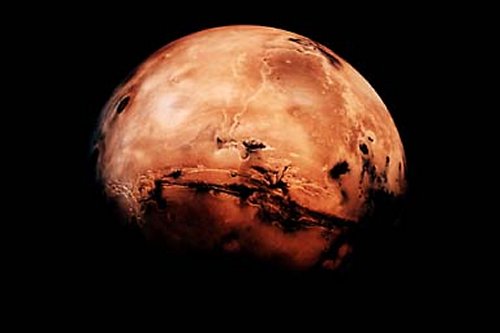
Credit: NASA
So you wanna land on Mars?
Yeah – sounds good. Got any tips?
Well first off: Good luck!
What do you mean “good luck”? – we’re talking about rocket science aren’t we?
Yeah, and if you spend any time with rocket scientists you’re going to hear someone say “space is hard”. That’s because it is. In fact 50% of missions that intended to land on Mars have resulted in failure.
That means 50% succeeded though, right?
You’re right! Okay, so you still wanna give it a go? Getting things to Mars is hard enough, but ensuring you don’t then just smash them straight into the planet requires another level of expertise. You need a way to slow them down.
Let’s look at the current state of play. We’re still using parachute technology from the 1970s. The Viking landers used it back in 1976, and most recently Mars Science Laboratory used it, together with sky cranes and other pyrotechnic gizmos to land Curiosity on the red planet.
So what’s the problem? If it ain’t broke, don’t fix it…
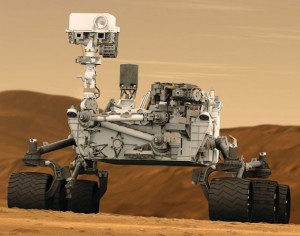
Mars Curiosity Rover Credit: NASA
Sort of. The issue is that the Viking-era parachutes have limitations in terms of the amount of mass they can be used to land. MSL (Curiosity) has a mass of around a tonne, but if we want to explore further, take more instruments, and eventually take people to Mars, you’ll need to be able to transport much more than a small 4×4-sized rover like Curiosity.
Our current landing capability on Mars is about 1.5 tonnes, so one of the first steps on the technology development path to Mars is working out how to land larger masses.
You mean (to coin a phrase from Jaws) “we’re gonna need a bigger boat”?
Exactly – though it’ll be less boat, more space ship! If you want to land people on Mars you will have to send them up with the supplies that they need to survive. Food, water, air, habitats, rovers, tools and medical supplies will all have to be sent from Earth. You’ll also want an ascent vehicle so that you can get back off the surface to come home again.
How much cargo are we talking here?
Well NASA’s Bill Gerstenmaier, who looks after Human Exploration and Operations, reckons you’re looking at needing around 15-20 tonnes of cargo for a human mission to Mars. Bearing in mind the biggest thing we’ve landed on the red planet so far was Curiosity, at less than a tonne, that would require a big jump up from our current capability.
Well you use rockets to get you there, can’t you use rockets to slow you down too?
Slowing things down from supersonic speeds would take a lot of rocket fuel, but when every kilo counts – and costs – you want to minimise the mass you are launching. In fact to slow your vehicle down with rockets would require about the same amount of fuel as you needed to launch it, which makes it pretty unviable.
The idea behind Viking’s parachute technique is to use atmospheric drag to slow down the vehicle. The issue is that with very little atmosphere on Mars compared with Earth, you are limited in the amount of drag – and braking – that you can achieve with the parachutes.
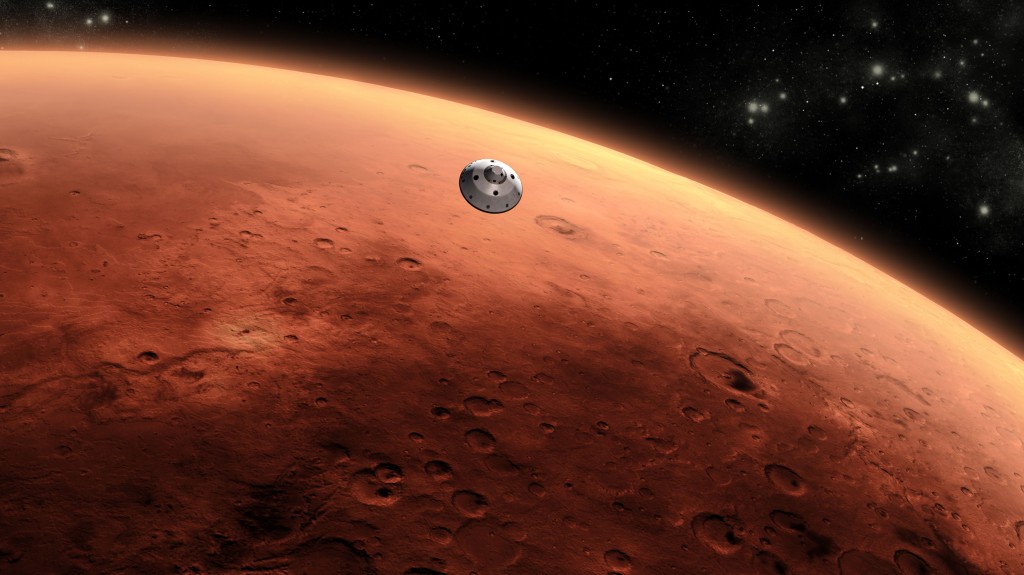
Credit: NASA
For smaller landers, that can be enough to allow you to employ other techniques, like using retro rockets, cushioning your lander in an inflatable structure, or the famous MSL skycrane, but for larger masses, you need to do much more to counteract the greater momentum that they have.
We’re also limited in where we can land on Mars. We need all the distance we can get to slow down, so mountains and areas of higher altitude on Mars are currently out of the question as landing sites.
Is the Martian atmosphere really so different from ours?
Yes. If you think of the atmosphere of Mars as being like water, Earth’s atmosphere is more like PVA glue – it’s much thicker in terms of its viscosity. Not only that, but the thickness in terms of how high it reaches above the planet, is much less than that of Earth’s atmosphere too. Imagine you’re on a diving board hoping for a soft landing – it’s the difference between jumping into an inch of water, or a whole pool of glue. I know which I’d choose.
Since there is hardly any atmosphere on Mars, it makes it not only hard for landing, but also means that there isn’t the same protection from radiation on Mars that we get from Earth’s atmosphere. That’s why radiation shielding and underground habitats are being considered.
So what can we do?
That’s the question that scientists and engineers at NASA are trying to answer at the moment. The Jet Propulsion Lab (JPL) is respected as a centre for excellence for entry, descent and landing (EDL) and they are leading a cross-agency experiment to test new solutions to the problem. They’ve recently conducted the second test of the low density supersonic decelerator project – LDSD.
Wait – I heard about that – the thing that looks like a flying-saucer?
That’s the one! Actually there are two parts to LDSD. The “flying saucer” that you’re talking about is their test vehicle, which includes a supersonic inflatable aerodynamic decelerator, or SIAD. Then there’s also an enormous supersonic parachute, called a supersonic ring sail.
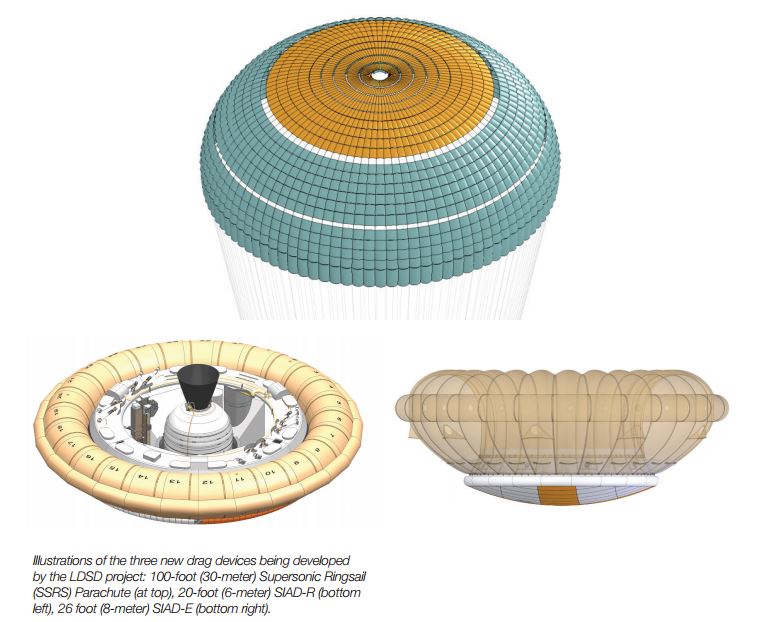
Credit: NASA
Supersonic inflatables? Are you making this up?
No! Inflatable structures are NASA’s way of “packing light”. Basically around the rim of the spacecraft they have added an inflatable ring that increases the diameter of the spacecraft. The larger surface area means it creates a larger drag, thus slowing the vehicle down more effectively. On the journey to Mars this would be packaged up inside the craft and it can then be deployed to help slow it down.
SIAD slows the craft down from around four times the speed of sound (Mach 4) to around two-and-a-half times the speed of sound (Mach 2.5).
But that’s still going faster than Concorde?
Yes, but it is hoped that a special supersonic parachute – at 30.5m diameter, the largest ever! – will slow the vehicle down to below the speed of sound (Mach 1).
You said they’re testing it – you mean they sent it to Mars?
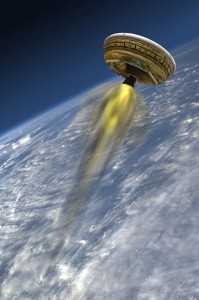
Artist’s concept of LDSD Credit: NASA JPL/Caltech
Sending things to Mars without testing them on Earth is not only risky, and extremely costly, but due to the positioning of the planets, we only get a launch window every couple of years. The LDSD team realised that the upper reaches of Earth’s atmosphere – the stratosphere – has similar properties to the atmosphere of Mars.
By filling a gigantic (as in, could fill an American football stadium gigantic) balloon with helium, they were able to lift the test craft up to 120,00ft (36.5Km). They then stabilised it, released it from the balloon and used a rocket engine to boost it right up to the edge of the stratosphere – 180,000ft (55Km) above Earth – that’s around 20Km higher than Felix Baumgartner was when he did his jump from “the edge of space”
Don’t stop now – what happened?
The vehicle was travelling at around Mach 3 and the inflatable element, SIAD, deployed and all indications are it worked perfectly. It is the second time this version of SIAD (SIAD-R) has been tested, and both tests went well.
What about the parachute?
The parachute deployed, but “didn’t perform as expected” according to NASA.
In other words it failed?
That’s not how we like to look at these things. Although the parachute was ripped apart despite being reinforced with Kevlar, and being redesigned since last year’s test when the parachute was shredded, the team have still got some useful data. It’s all about testing, learning and improving for next time – and that’s why it’s good to be able to test things on Earth before sending them thousands of miles away into space.
What happens next?
The team will look at the data and reflect on this test. The next LDSD test is scheduled for summer 2016 – so we’ll have to wait until then to see if they have managed to fix the parachute problem.
But NASA is still planning on going to Mars?
Yep. They want to land humans on an asteroid in 2025 and then humans on Mars in the 2030s. You can find out more on their Journey to Mars pages on the NASA website.

